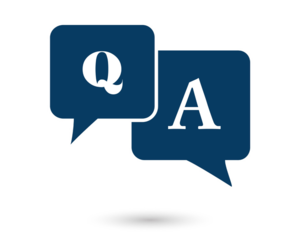“What is panic disorder, and what are the effective treatments for managing panic attacks?”
I've experienced panic attacks recently. What is panic disorder, and what are the effective treatments for managing panic attacks?
5 Answers
Councelor/TherapistPsychiatrist
Panic disorder involves repeated panic attacks. Treatment typically includes therapy (like CBT) and medications (SSRIs or benzodiazepines). For more information, please contact your mental health provider or, if you are in Texas, schedule an appointment with Mid Cities Psychiatry.
Panic disorder is characterized by recurrent, unexpected panic attacks—intense episodes of fear or discomfort that peak within minutes. These attacks often include physical symptoms like:
• Rapid heart rate (palpitations)
• Shortness of breath
• Dizziness or lightheadedness
• Sweating
• Trembling or shaking
• Feelings of choking
• Nausea
• Derealization or depersonalization
• Fear of losing control or dying
A key feature of panic disorder is persistent worry about future attacks and/or maladaptive behaviors to avoid them.
Effective Treatments for Panic Attacks and Panic Disorder
1. Cognitive-Behavioral Therapy (CBT)
2. Exposure Therapy
3. Medications (If Needed)
4. Mindfulness and Relaxation Techniques
5. Lifestyle Adjustments
• Rapid heart rate (palpitations)
• Shortness of breath
• Dizziness or lightheadedness
• Sweating
• Trembling or shaking
• Feelings of choking
• Nausea
• Derealization or depersonalization
• Fear of losing control or dying
A key feature of panic disorder is persistent worry about future attacks and/or maladaptive behaviors to avoid them.
Effective Treatments for Panic Attacks and Panic Disorder
1. Cognitive-Behavioral Therapy (CBT)
2. Exposure Therapy
3. Medications (If Needed)
4. Mindfulness and Relaxation Techniques
5. Lifestyle Adjustments
Technically, a panic disorder is present when the individual has spontaneous, chaotic episodes of high heart rate, sweating, stomach or bowel distress, rapid breathing, tingling in the extremities, dizziness, fear of losing control and passing out or dying. During these episodes, the ability to maintain one's normal functionality of thoughts, feelings, and behavior is lost and replaced by overwhelming anxiety. Panic attacks, or a panic disorder, develop from traumatic experiences and/or chronically high levels of stress that involve extreme levels of perceived threat and danger to one's sense of health and wellbeing. Although a panic attack is highly disruptive it will end without causing injury except from the possibility of secondary events such as falling and loss of control while driving, etc. If an individual passes out during a panic attack, they will return to their normal functionality in a short time due cessation of the perceived threat and the associated symptoms due to their loss of consciousness. Many people who have panic disorders also have PTSD. Treatment of a panic disorder requires psychotherapy which will include a variety of interventions such as relaxation training, cognitive behavioral therapy, EMDR, mindfulness meditation, neurofeedback, hypnosis, mind-body work, talk therapy, and possibly transcranial electrical or magnetic stimulation. All these various methods and means as provided by a mental health professional have the same objective of enabling the person to shift their focus from the "there and then" threats of the trauma to the "here and now" safety produced by the self-regulation skills they have developed to remedy their anxiety and panic attacks and instead live in a state of cognitive, emotional, behavioral and physical balance.
Panic disorder is a type of anxiety disorder in which the person has panic attacks but does not know what causes them. As a result, they become hypervigilant to bodily sensations that suggest they may be having a panic attack, which often leads to another panic attack attack. Sometimes they become fearful of where they might be when they have a panic attack since it's unpredictable and may limit the places where they go. Consequently, sometimes people are diagnosed with panic disorder with agoraphobia. Cognitive behavior therapy can help teach clients strategies for learning how to cope with their anxiety and mediation can help control the panic attacks.




